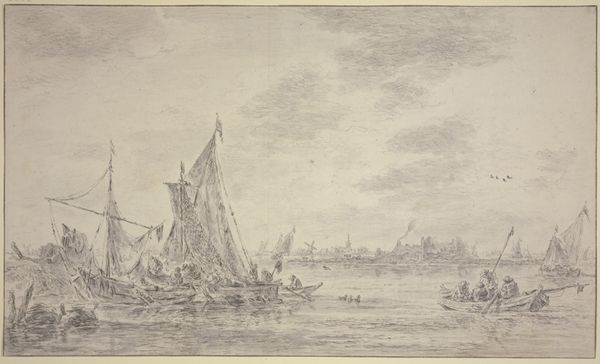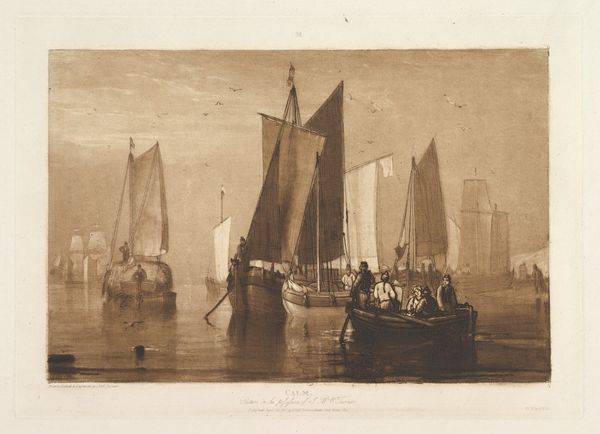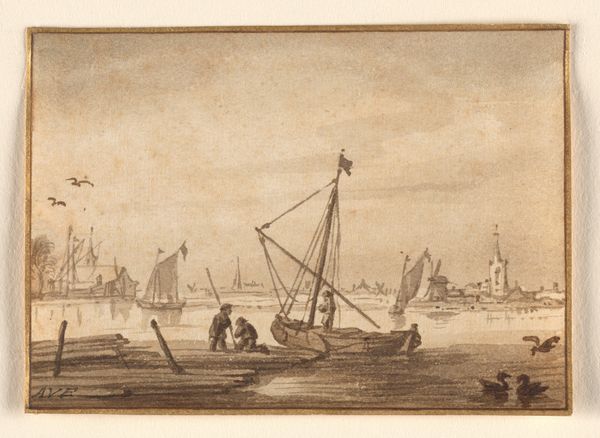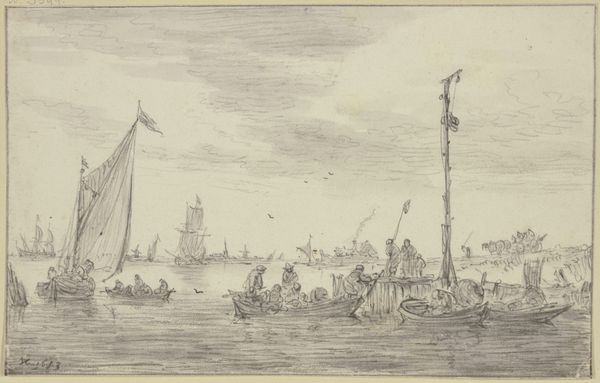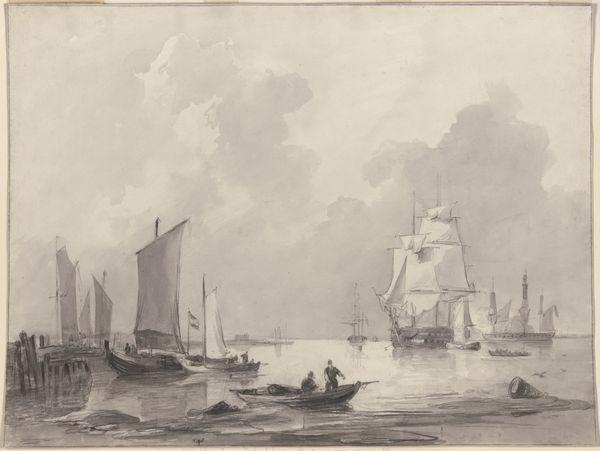
A "Duinopschuit," a Smaller Sailing Boat, and a Rowboat c. 1656
0:00
0:00
print, etching
#
dutch-golden-age
# print
#
etching
#
landscape
#
cityscape
Dimensions: plate: 13.5 × 20.6 cm (5 5/16 × 8 1/8 in.) sheet: 15 × 22 cm (5 7/8 × 8 11/16 in.)
Copyright: National Gallery of Art: CC0 1.0
Curator: This delicate etching, dating back to around 1656, is titled "A 'Duinopschuit,' a Smaller Sailing Boat, and a Rowboat" by Reinier Nooms, also known as Zeeman. What strikes you most when you look at it? Editor: The stark contrast! The precise linework of the boats against the muted, almost empty sky, makes me consider how it represents Dutch maritime power, but also human labor, right? It's quiet but commanding. Curator: Precisely! Zeeman himself worked on ships, so his maritime scenes are born from lived experience. It’s insightful to consider the symbolism inherent in these various types of boats; the Duinopschuit, the workhorse vessel of coastal communities…and then the smaller rowboat perhaps indicating individual struggle against the vastness of the sea. The way this class and work is placed should not be discounted in terms of political importance and consideration of power. Editor: The composition pulls us in, though. The placement of the boats is no accident: the larger boat leads our eye towards the city in the background, but the smaller boats frame the edges. Curator: Considering the artist's positionality becomes interesting here, Nooms occupied a particular social position where this all coalesces; born into the maritime, rose through his skill to some renown. And look at the way the water meets the sky on the horizon. Note that the flags are all up. These details become symbolic in relation to gender and the active political climate of that era, and this gives context to the whole. Editor: Yes, and if we focus on the interplay between light and shadow…the shading gives a palpable depth to the otherwise flat plane of the water and the linear forms achieve a real sense of movement. This isn’t just a record; it's an atmosphere. Curator: In understanding its historical weight, we are better placed to unpack our contemporary experience with the imagery—the boats become symbolic, gesturing to a nation's wealth accumulated through complex colonial engagements and human capital. Editor: Absolutely. Focusing on the lines, light and shade it's easy to see this as more than a functional study of ships. Curator: Well said; considering how Nooms balances observation with societal context and critique ensures we leave having expanded both our aesthetic and historical understanding. Editor: I agree. I think diving deep into form allows the themes of the era to wash to the surface, transforming our relationship with a seascape on the page.
Comments
No comments
Be the first to comment and join the conversation on the ultimate creative platform.




